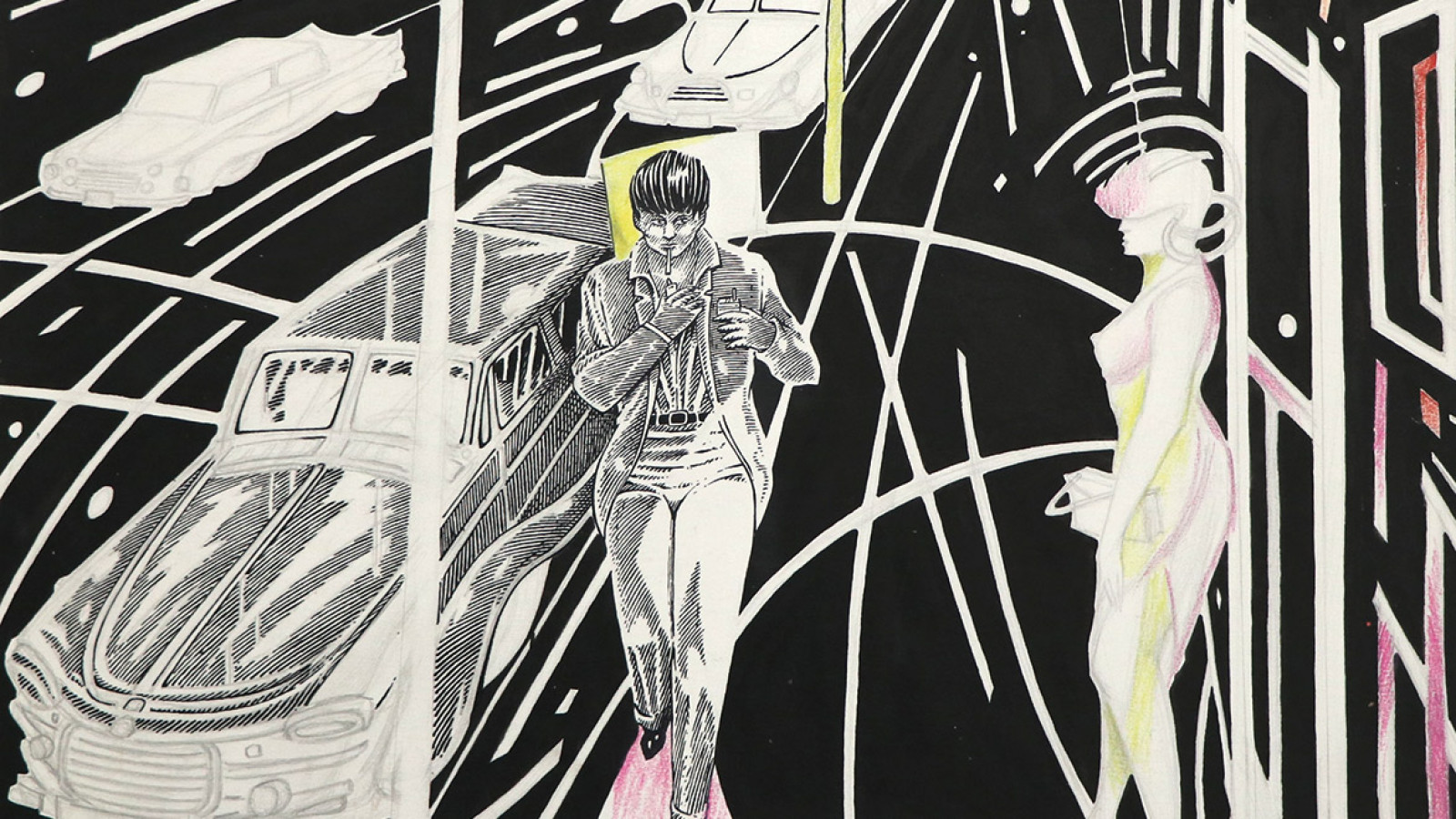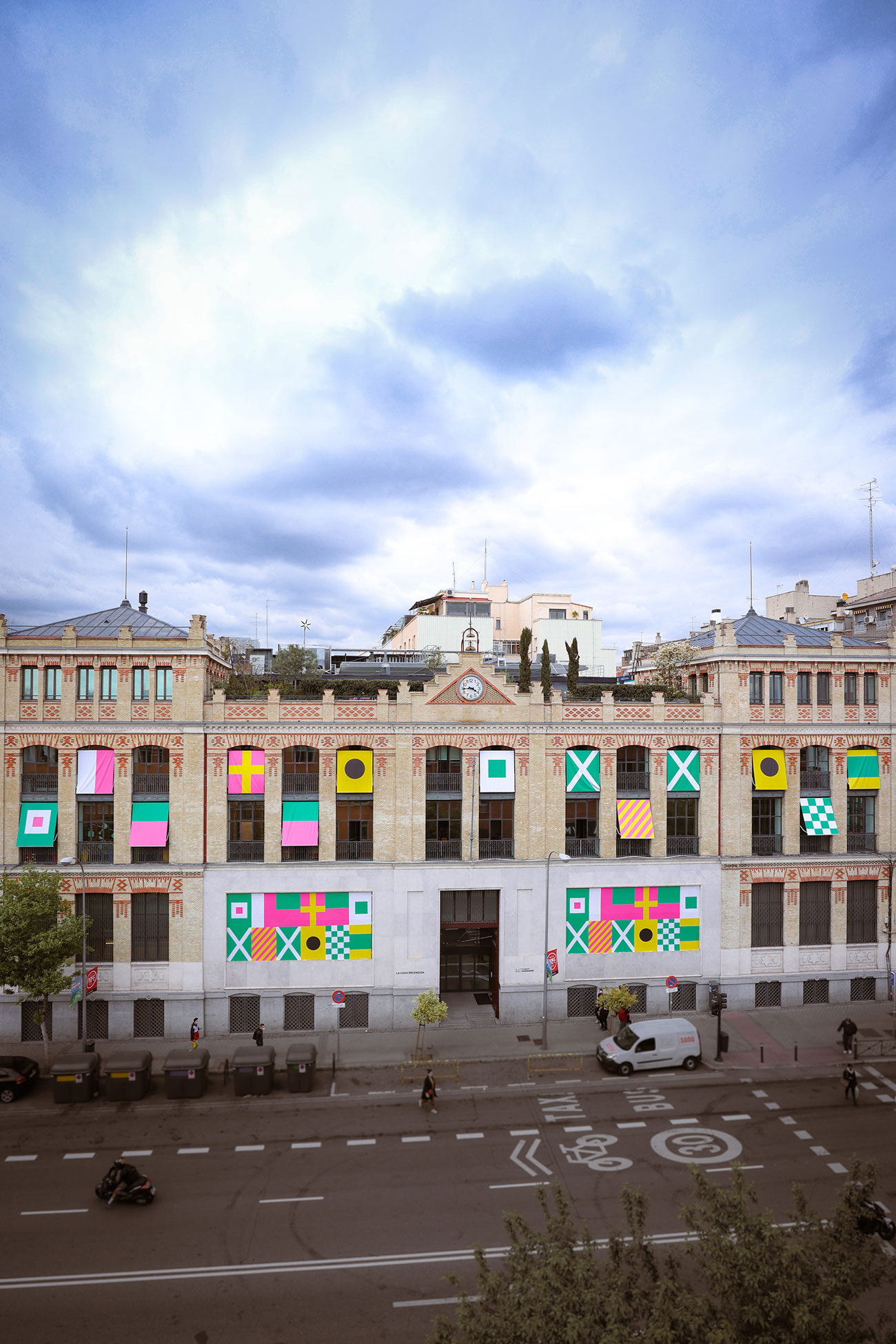Modern Vices. Ceesepe 1973-1983
This exhibition will revisit a very specific period in Ceesepe's production, primarily focused on the visual language of comics and cartoons.
Before becoming the painter who discovered poetry in the back streets of Madrid, Ceesepe was a precocious, tenacious and brilliant comic book artist. Although active in the comic world for barely ten years, his influence and resonance transcended that relatively short period, and today, decades later, his work is held up as a unique mirror of life in the aftermath of Franco's death and the end of the dictatorship. This crucial period in the history of Spain is impossible to understand without the stimulus triggered by underground comix. The comic books created by Rrollo in Barcelona and the Cascorro Factory in Madrid were two of the focal points of a movement that brought together young people with different sensibilities. Chief among them was a Madrid artist who had developed an original instinct for drawing as a teenager.
Ceesepe was just 16 years old when he published his first comic strip. It revolved around what would become his most emblematic and transgressive figure, the bald yet long-haired Slober, and it appeared in Star, the magazine that came to be one of the few countercultural beacons in Spain at the time. The cartoons travelled in an envelope from Madrid to Barcelona, where their recipients discovered a gold mine and one of their most outstanding contributors. Ceesepe, who would soon become one of the leading figures in the Madrid scene known as La Movida, acted as a bridge between the two cities, creating a vital link between the Rastro flea market and Las Ramblas—in other words, between two hegemonic places in the new wave of freedom that emerged in Madrid and Barcelona. Politically incorrect and controversial by nature, comics enabled a novice like Ceesepe to experiment with drawing and its narrative potential. However, he soon outgrew the medium and his work evolved as he began to explore the possibilities of painting. The cartoons became bigger and colour more prominent, and the increasingly sophisticated and meticulous comic strips became small paintings, a foretaste of what was to come.
Ceesepe contributed to iconic comic books like Nasti de Plasti and Carajillo, and later on to El Víbora and other more professional publications. But it was under the label of the Cascorro Factory—whose initial founders, Ceesepe himself and the photographer Alberto García-Alix, were soon joined by Ouka Leele and El Hortelano—that he published his most important and ground-breaking work of that time, Vicios Modernos, a seminal fanzine that included the comic strip of the title, created with photographs by García-Alix, and Bestias de lujo, which provided an early glimpse of the embryo of a new direction. Before abandoning comics altogether, Ceesepe created the posters for Pedro Almodóvar's first film, Pepi, Luci, Bom and Other Girls Like Mom, and wrote, drew and filmed with García-Alix a jewel of amateur cinema: the medium-length movie The Day That Bombita Dies, whose colourist and dramatic comic version hints at the future painter’s personality. Most of the originals, photographs and notebooks, many of them school exercise books, that are featured in the Modern Vices: Ceesepe 1973-1983 exhibition were purchased from the artist by the Lafuente Archive. Together with La Casa Encendida, the archive worked hand in hand with the artist on this exhibition until he passed away in September 2018.
Curator: Elsa Fernández-Santos.

